|
Accessing prior knowledge is an important element of instruction especially when serving multilingual learners. It doesn’t have to take long, but when implemented it can stimulate thinking and help new learning stick too.
ABC Brainstorming is one way to access prior knowledge, and it can also be used as a culminating activity. ABC Brainstorming can be done in small collaborative groups or it can be done individually. I have found it most effective when introduced first individually for a few minutes and then in small collaborative groups. Multilingual learners count on us to provide high-quality, comprehensible, and culturally responsive instruction in each lesson in every classroom.
Here are 22 practical and efficient ways (in no particular order) we can support emergent bilinguals as they climb to become our future global leaders. *The terms multilingual, emergent bilingual, and English learner are used interchangeably in this article and also include the acronyms MLs, EBs, and ELs. This article was originally posted on 2-25-2017 and has been updated on 9-17-2020 to include information relevant to distance learning.
“A picture is worth a thousand words" or so we’ve heard. The question is, how do we encourage students to get those words out, especially if we are teaching and learning in remote or hybrid settings? Some of you may be familiar with the Picture Word Inductive Model (PWIM) which was first introduced by Emily Calhoun (1999). This instructional method has been successful in traditional classrooms for decades, but can we implement it in virtual settings too? Read on to find out what PWIM is and how you can implement it to develop language. This article originally posted on Middle Web on 1/6/2019. This is an updated version that includes how to promote academic language during distance learning.
“My kids seem to speak English well, but when it comes to academic tasks, they struggle.” We often wonder why English learners have a difficult time with standardized tests and essays in content areas but are able to communicate with peers and get along fairly well on a day to day basis. The reason behind it may be that academic language is different from everyday language. Academic language takes from 5-7 years to acquire while social or conversational language (often known as BICS, basic interpersonal communicative skills coined by Jim Cummins) only takes 2-3 years. What we know is that students need to make greater gains in academic language in order to become successful in school and post secondary. Academic language is the language of the content area of instruction. It is the textbook talk and vocabulary and syntax used in lectures and class presentation. It is not just single words and includes phrases and sentences as well. It is critical that English learners are offered many opportunities on a daily basis to practice using academic language. Why? We have to consider that some English learners go home to environments where they speak another language in the home. And that is awesome! Bilingualism has great benefits. However, to develop bilingualism, when they are in our classrooms or under our instruction, we have to build as many opportunities as possible for English language development using domain specific vocabulary. We have to put the language in their mouths. Other students (including native English speaking students) may go home to English speaking households, but the level of vocabulary or conversation may not be where we’d hope. This is yet another reason why our instruction (be it face to face or remote) needs to be filled with opportunities for students to use academic language. How can we get students to use academic language? Below you will find 10 ways to get students, especially English learners, practicing academic language in your classroom and beyond. What is the difference and Why should we care?Well, first and foremost, we should care if we want our students to speak like scholars. If we want our students to be marketable after they graduate. If we want them TO graduate! Then we should care! Sentence stems and frames are scaffolds as students learn language and content.
Sometimes educators use the terms sentence stems, sentence starters and sentence frames interchangeably. You may wonder...are they the same thing? The answer is no, they are are not the same. They have their own form and function. Why is that when we teach our students about numbers, we show them the number one visually. We hold up one finger and maybe place one object in front of them. But when we teach them new vocabulary, we rarely start with the visual--instead we begin with the written word and then move to the visual...maybe. In math we move from concrete to abstract but we rarely do that with other content areas.
Research indicates that our brains process visuals 60,000X faster than text. Why are we reluctant to tap into that and use it to our advantage in the classroom? What kind of word wall is on your walls? Does it support your learners or is it just there as part of the wall paper creating wall pollution?
Let me tell you first hand...I used to have a traditional word wall and I wholeheartedly thought I was doing what was best for my students. It was alphabetical and I put words on it that were Tier I, Tier II, and Tier III (thinking that I was supporting everyone). I tried playing games with my students using the word wall and I even let them add their own words to it so they could take ownership of the wall. But as a lifelong learner I embrace new information and when I find something that is better for students, I recognize it. Recently I learned about Interactive Word Walls from Dr. Julie Jackson. She is a professor at Texas State University and travels to deliver professional development regarding these amazing word walls. Her expertise is in the field of science but I think the word walls can work in any content area.  Have you ever walked into a classroom and heard a teacher say, "I love how quiet you all are. Keep it up."? Quiet classrooms are dangerous for English language learners and most other students as well. Talk is key to learning. If the goal is to lift the level of language, how can we do that in a quiet classroom? Today I had the privilege of attending a great workshop in San Antonio called Making Words Real. It was presented by Joanne Billingsley, the author of the book, Making Words Real: Proven Strategies for Building Academic Vocabulary Fast. The session was very informative, interactive, and relevant for K-12 across content areas.
Joanne reminded us that words have a great deal of power for all students. They help us understand, be understood, and connect. Word knowledge leads to world knowledge. Key for us to remember as educators is that we all teach language. We teach the language of our content. Some of us teach math while others teach social studies or science. But we are all language teachers. We teach the language of our content because the situation demands it. There is a direct link between vocabulary knowledge and academic success. When our ELLs are missing vocabulary they lag behind academically creating a gap. As teachers, we should be cognizant about how much talking we are doing and how much academic discourse we are allowing our students to practice. If we are doing all or most of the talking, then ELLs will continue to lack progress in speaking and consequently in writing and reading. There is a direct link between speaking, writing and reading as well. The more our kids practice the language, the stronger they will become as readers and writers. Exposure to academic is not enough. Students must have time for guided talk, purposeful conversations, and explicit instruction. In her book, Joanne shares many examples of how to create a language rich environment that breads academic vocabulary. I will not go over each one, but I will say that most (if not all) of them include the employment of gestures, visuals, physical movement, and sentence stems. Joanne reminds us that it is critical that students VERBALIZE to INTERNALIZE. Words become real when kids use them in speaking and writing not if they memorized them for a vocabulary test. |
Categories
All
|

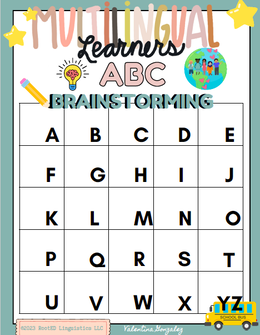
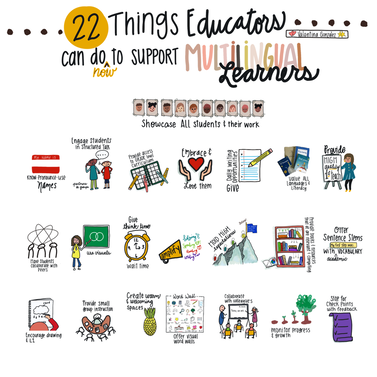
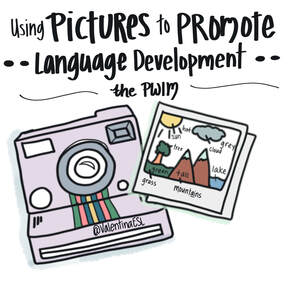
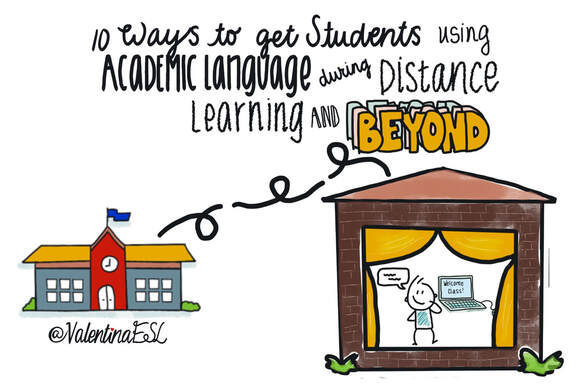

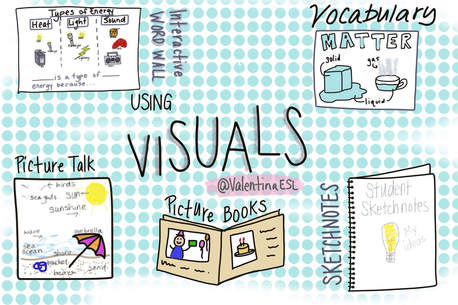
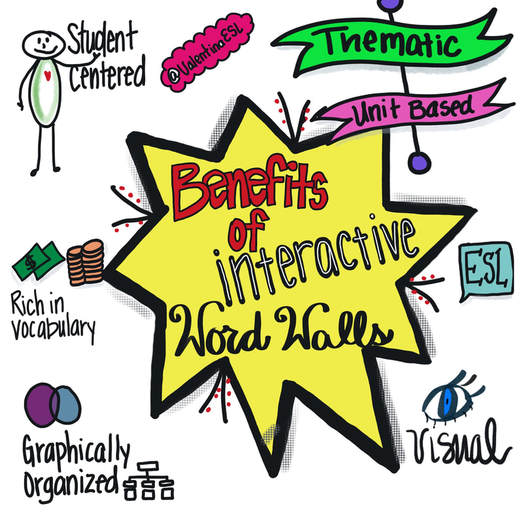

 RSS Feed
RSS Feed
